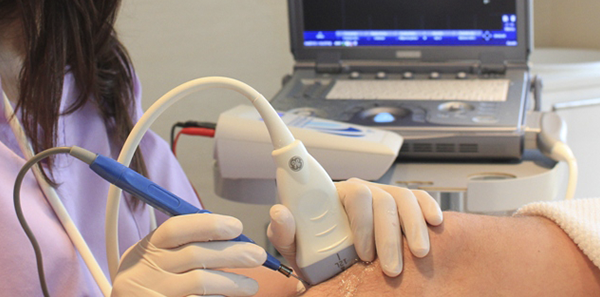
Research on the processes and effects of meditation is an increasing larger subfield of neurological research. Modern scientific techniques and instruments, such as functional magnetic resonance imaging and electroencephalography have been used to see what is happening in the bodies of people when they meditate, and how their bodies and brains change after meditating regularly.
These studies have shown that major changes to the body occur as a result of regular meditation practice. For example, a study carried out by Richard Davidson and Jon Kabat-Zinn showed that eight weeks of meditation based on awareness produced significant increases in left frontal lobe brain activity, which is associated with positive emotions. Positive emotion is a skill that can be mastered with training similar to that of learning to ride a bike or play the piano.
Meditation has been practised by various cultures since antiquity, especially in monastic communities. Nowadays there are many secular programmes in the West too, including those based on Mindfulness. Nowadays, meditation practices have become popular with the medical and mental health community in the west, as these processes have a positive impact on patients suffering from stress-related health problems.
The relaxation response
Dr. Herbert Benson, founder of the Mind/Body Medical Institute and working at Harvard University with the collaboration of several hospitals in Boston, reports that meditation induces a series of biochemical and physical changes in the body or a “relaxation response”. The relaxation response includes changes in metabolism, heart rate, breathing, blood pressure and brain chemistry. Benson and his team also carried out clinical studies in Buddhist monasteries in the Himalayan mountains and recorded the relaxation response in order to document the benefits of meditation, which back in 1975 were not widely known.
The calming effects of meditation
According to an article published in March 2006 in the Psychological Bulletin, brain activity measured by electroencephalography starts to diminish as a result of meditation. The human nervous system includes the parasympathetic system, which works to regulate heart rate, breathing and other involuntary motor functions. The National Institutes of Health (NIH) stated: “It is thought that some kinds of medication may function by reducing sympathetic nervous system activity and increasing parasympathetic nervous system activity”.
Therapeutic use in the west
Meditation has become part of mainstream healthcare as a way of reducing stress and pain. Meditation has been used in hospitals as a stress-reliever to treat cases of chronic or terminal disease to reduce the complications associated with greater anxiety, including a weakened immune system. There is growing consensus in the medical community that mental factors like stress contribute significantly to impaired physical health.
A 2003 meta-analysis found links between stress reduction and the practice of Mindfulness and reached the conclusion that this can be extremely useful for people trying to address both clinical and non-clinical problems, especially for treating chronic pain, fibromyalgia, cancer patients and coronary artery disease. Improvements were observed at both physical and mental level. Research studies at Harvard show that breathing rate is lowered and heart rate is increased, leading to a greater amount of oxygen in the blood.
Unified body-mind training
A study based on a group of university students, who were asked to use a meditation technique involving body relaxation, mental images and mind training, concluded that “meditation can improve the integrity and efficiency of certain connections in the brain” by increasing them in number and strength. Volunteers’ brain scans showed significant changes in the white matter of the anterior cingulate cortex.
Transcendental meditation
A meta-analysis carried out in 2012 reported that transcendental meditation reduces negative emotions and neuroticism, as well as improving learning and memory and promoting self-fulfilment. Some research reviews also suggest that transcendental meditation can reduce cardiovascular disease.
In 2011 a study of the way transcendental meditation works in reducing blood pressure was scheduled for publication in the journal Archives of Internal Medicine. The paper was withdrawn 12 minutes before the journal went to print and was later published by the American Heart Association in 2013, entitled “Beyond Medications and Diet: Alternative Approaches to Lowering Blood Pressure. A Scientific Statement From the American Heart Association”. The study reviewed existing research on the effects of alternative treatments, including several meditation and relaxation techniques. The study came to the conclusion that meditation could be considered in clinical practice as a way of reducing blood pressure. The study, headed by Robert Brook, was authored by a group of researchers on behalf of the American Heart Association Professional Education Council, the High Blood Pressure Research Council, the Cardiovascular Nursing Council, the Epidemiology and Prevention Council, and the Council on Nutrition, Physical Activity and Metabolism.
The benefits of meditation
- Lessens stress (helps balance the endocrine and immune systems).
- Significantly reduces the symptoms associated with depression, anxiety disorders and chronic pain.
- Improves insomnia.
- Sharpens the ability to “pay attention”.
- Improves quality of life.
- Improves neuroplasticity in the brain.
- By improving the connection between the temporal and parietal lobes, it leads to a better outlook and enhances compassion and empathy.
- Improves memory.
- Improves the ability to come up with strategies for tackling stress.
All these scientific studies that are starting to back the use of meditation and its effects on health reveal a technique dating back a thousand years. It is not only effective for self-healing and managing your own well-being, it is also cheap and effective and with no side effects for people who practice it regularly.
Just as it is important to exercise your body to stay healthy, flexible and toned, it would be advisable to train your body and improve your brain function by using techniques like Reiki, meditation, bioenergy and visualisation to regulate your emotions, live consciously, generate positive emotions and prevent mental decline, amongst other benefits.
D.ª Luisa Martínez Álvarez – Master Instructor on different types of meditation. Reiki and Work therapies Arena Sports Centre (Alicante)
The information published in this media neither substitutes nor complements in any way the direct supervision of a doctor, his diagnosis or the treatment that he may prescribe. It should also not be used for self-diagnosis.
The exclusive responsibility for the use of this service lies with the reader.
ASSSA advises you to always consult your doctor about any issue concerning your health.












